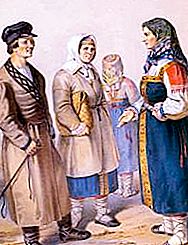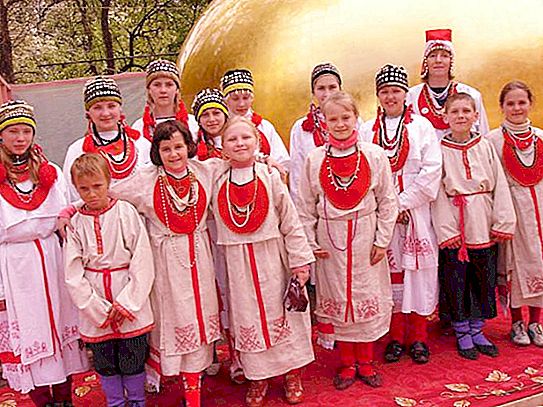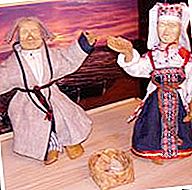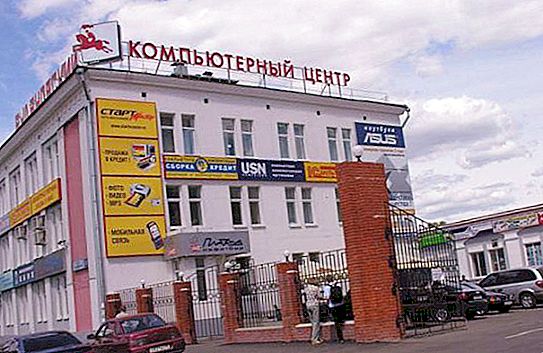The people of Izhora are the smallest of all the peoples inhabiting Russia. There are about 200 people here, another 60 of them live in Estonia. This ethnonym comes from the Swedish word Ingermanland - the name of the land south of the Gulf of Finland. There are two versions about where this name comes from: either on behalf of Ingigerda, the wife of Yaroslav the Wise, or on behalf of the old Russian prince Igor, son of Rurik.

So what is known about the representatives of the ethnic group Izhora? The general information about the people below will help you learn more.
Resettlement area
In the 12-13th centuries, Izhora lived on both sides of the Neva, the approximate borders of their settlements were the rivers Sestra, Tosna, Nazia. At the beginning of the 16th century, their possessions reached the Oredezh River in the south. But then the territory began to decrease gradually: at first the settlements on the Karelian Isthmus disappeared, then near the coastal zone of Lomonosov, and then near the Oredezh River. Now Izhora live only in the Lomonosov and Kingisepp districts of the Leningrad region. Some representatives of this nationality moved to St. Petersburg. But still they do not neglect their roots, but identify themselves as Izhora.
The main area of residence is the Soikinsky Peninsula, which is located between the Luga and Koporskaya Bay. The natural features of this area are such that it is almost isolated from the mainland by a series of lakes and impassable swamps. That is why the people of Izhora in those settlements were able to maintain their original culture, despite the actual proximity to the northern capital.
History
The first mention of pagan Izhorians is found in the bull of Pope Alexander, written in the 12th century. Soon in Europe it became known that Izhora was a strong and dangerous people. In Russian chronicles, Izhors were first mentioned in the 13th century as allies of Novgorod. They were responsible for protecting the coastal areas from the Swedes.
But in 1611, Sweden still took possession of their land, so many native Izhors moved to the territory subject to Russia. But in 1721, Peter the Great conquered these lands, and they became part of the St. Petersburg province.

The census of 1732 showed that there are about 14 and a half thousand Izhoryans in Ingermanland. In the 19th century, their number increased slightly - up to 18 thousand. The statistics of 1926 shows the following figures: 16137 people.
But World War II made its own adjustments: most of the indigenous people were taken to neighboring Finland, and many settlements were simply destroyed. When they returned, they were not allowed to live in their homeland, but were relocated to Siberia, where it was virtually impossible to maintain their ethnicity and language. And those Izhors who lived on the Karelian Isthmus also assimilated with the local population. Only residents of Kingisepp district (north-west of the former Ingria), as well as partially natives of villages along the Kovashi River, remained native speakers of the culture and native culture.

Izhora Terrier is an endangered nation. In 1959, there were a little more than a thousand, in 1970 - 781, and in 1989 - 276. The most recent data is 266 people (2010). It is regrettable that their average age is 68-70 years, which means that after a few years Izhora as a nation can disappear altogether.
Tongue
He belongs to the Baltic-Finnish group. Izhora language has several dialects:
- Soikinsky;
- Heavian
- Lower Luzhsk;
- Oredezhsky.
Soikinsky is the main one, it is spoken by most of the Izhora peninsula. Khevsky is widespread in the Lomonosov district. Lower Luzhska is spoken in the lower reaches of the Luga River, where the strong influence of the Vodsky language is felt, because Vod and Izhora live there mixed. Oredezhsky disappeared in the 1930s, when its last carriers died. It is believed that this was the purest of all dialects, since it escaped the influence of the Finnish language.
But at the beginning, the speech was only oral in the ethnic group of Izhora. The people did not even have their own alphabet. Writing among Izhorians appeared only in the 1930s at the initiative of the government as part of a program for the cultural development of small nations. Letters were created on the basis of the Latin alphabet, then a single grammar was developed. Even studies in schools were conducted in the native language of Izhora, for this textbooks were published. True, this program was soon curtailed. Now only half of Izhora residents speak their native language, so since 2009 it has been included in the “Atlas of World Languages Endangered” by UNESCO.
Religion
Izhora is a people with a rich spiritual culture. From time immemorial, Izhors were pagans, but in the 13th century they began to actively convert to Orthodoxy.

After Sweden conquered their lands, Lutheranism began to be planted, however, it did not take root deeply. Now the religion of Izhora consists of a symbiosis of Orthodoxy and paganism. For example, faith in the spirits of the earth, water, guardians of the hearth is still preserved, sacred groves, stones, etc. are revered.
Handicrafts
From ancient times, the traditional occupations of Izhora were fishing and agriculture. Almost no cattle was kept. Pottery and woodworking were developed. Until recently, fishing for herring and smelt was the main income of Izhora residents from coastal areas. But, unfortunately, this fish almost ceased to be caught there due to the reproduction of one species of crustaceans. Therefore, the old people remained in the villages, and their children and grandchildren moved to large cities, mainly to St. Petersburg, in search of a good job.




